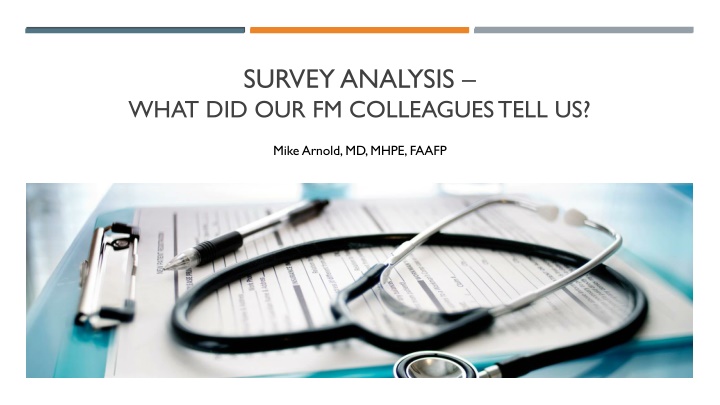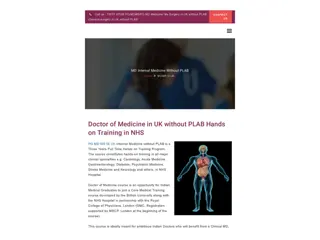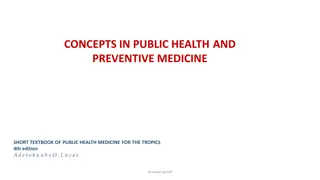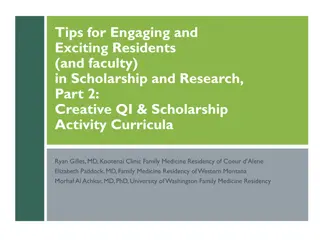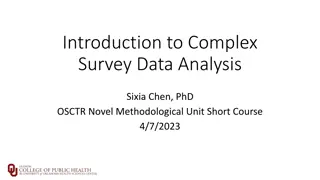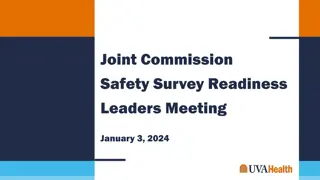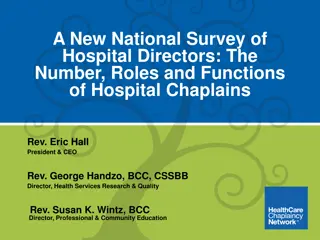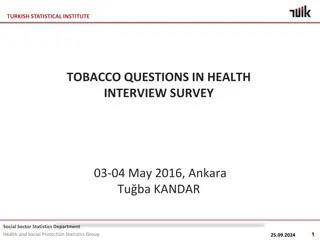Survey Analysis in Family Medicine: Insights from Colleagues
Delve into the analysis of survey responses provided by family medicine colleagues, including methods for interpreting data, descriptive statistics, and diagnostic criteria understanding.
Download Presentation

Please find below an Image/Link to download the presentation.
The content on the website is provided AS IS for your information and personal use only. It may not be sold, licensed, or shared on other websites without obtaining consent from the author.If you encounter any issues during the download, it is possible that the publisher has removed the file from their server.
You are allowed to download the files provided on this website for personal or commercial use, subject to the condition that they are used lawfully. All files are the property of their respective owners.
The content on the website is provided AS IS for your information and personal use only. It may not be sold, licensed, or shared on other websites without obtaining consent from the author.
E N D
Presentation Transcript
SURVEY ANALYSIS WHAT DID OUR FM COLLEAGUES TELL US? Mike Arnold, MD, MHPE, FAAFP
ANALYZING SURVEY RESPONSES Simpler than you would think
METHODS FOR INTERPRETING SURVEY DATA 1.Descriptive Statistics the basic results 2.Cross-Tabs (Chi Squared) Compare result (DV) with demographic data (IDV) 3.Logistic Regression Compare likelihood of result (DV) with demographic (IDV)
STATISTICS SOFTWARE NOTE There are so many free open-source software packages I used JASP open-source software by Dutch universities My bias towards tall, smart, happy people
DESCRIPTIVE STATISTICS Get right from Excel E.g. Percentage of the sample respondents who said they were confident or very confident with diagnosing HFpEF. Include the denominator! Denominator should be the ones that weren t blank. 26% of the 197 respondants who answered were confident or very confident Should not be the only stats you use
PROPORTION OF ENCOUNTERS WITH OLDER ADULTS What percentage of your clinical encounters are 65 years old and older? Older adults >20% of encounters 10-20% 10-20% 1-9% <1% >35% 1-9% >35% 10-20% 21-34% 21-34% <1% 21-34% 21-34% 21-34% 1-9% 10-20% <1% 10-20% <1% 1-9% 0 0 0 0 0 0 0 0 1 1 0 1 1 1 0 0 0 0 0 0
SIMPLIFIED FOR COMPARISON Use logic to give a 1 if choose: 21-35% >35%
I know the diagnostic criteria for diagnosing dementia. Neutral Agree Agree Agree Neutral Agree Strongly Agree Neutral Agree Agree Agree Neutral Agree Agree Neutral Strongly Agree Agree with dx criteria for dementia 0 1 1 1 0 1 1 0 1 1 1 0 1 1 0 1 DIAGNOSTIC CRITERIA FOR DIAGNOSING DEMENTIA
SIMPLIFIED FOR COMPARISON Use logic to give a 1 if: Strongly Agree or Agree
CONTINGENCY TABLES (CHI-SQUARE) Compare responses with a demographic variable you suspect may matter E.g. Do women respond differently than men? E.g. Do physicians out of residency 5 years or less respond differently? Builds from descriptive statistics what changes? Comparisons should be decided before starting not just p-hacking
ALL THE CHOICES TOO MUCH, NOT SIGNIFICANT 1. More categories, harder to be significant 2. Smaller samples in each category requires an expected number in each block of 5
2X2 TABLE MUCH MORE DOABLE AND SHOWS SIGNIFICANCE
PRESENTING More than significance compare to total While 44% of respondents (36 of 81) who were O5 or above agreed that they could identify when cognitive impairments affect a patient s daily life, only 31% of respondents who were O4 or below did. What is the difference (effect size)? Is it enough to be important? This difference was statistically significant (p<0.05) Statistical significance only matters if we believe it s important if it is.
LOGISTIC REGRESSION Compare variable by probability E.g. Do women have a higher odds of answering this way than men? E.g. Do physicians out of residency 5 years or less have a higher odds of knowing this fact? Similarities to Chi-Squared but answers in Odds Ratio Odds Ratio is significant if 95%tile doesn t cross 1.00 Next Slide Are junior physicians less likely believe they can identify when cognitive impairment affects a patient s daily life?
THANK YOU Now you get to choose: Design a survey or Process Results
